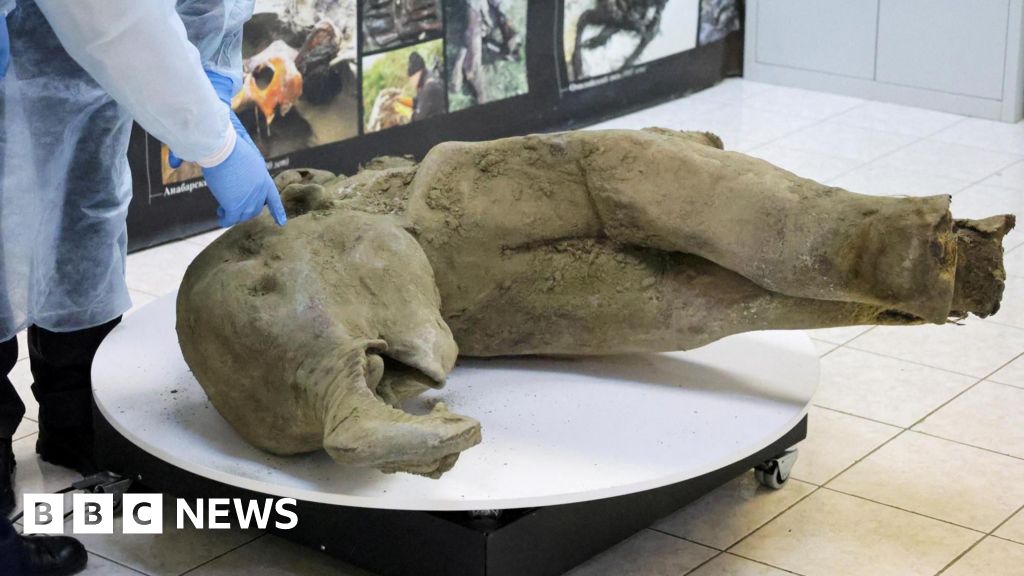
Russian scientists have unveiled the remains of a 50,000-year-old baby mammoth found in thawing permafrost in the remote Yakutia region of Siberia during the summer.
They say “Yana” – who has been named after the river basin where she was discovered – is the world’s best-preserved mammoth carcass.
Weighing in at over 100kg (15st 10lb), and measuring 120cm (4ft) tall and 200cm long, Yana is estimated to have been only about one-year-old when she died.
Before this, there were only six similar discoveries in the world – five in Russia and one in Canada.
Yana was found in the Batagaika crater, the world’s largest permafrost (ground that is permanently frozen) crater, by people living nearby.
The residents “were in the right place at the right time”, the head of the Lazarev Mammoth Museum Laboratory said.
“They saw that the mammoth had almost completely thawed out” and decided to build a make-shift stretcher to lift the mammoth to the surface, said Maxim Cherpasov.
“As a rule, the part that thaws out first, especially the trunk, is often eaten by modern predators or birds,” he told the Reuters news agency.
But “even though the forelimbs have already been eaten, the head is remarkably well preserved”, he added.
A researcher at the museum, Gavril Novgorodov, told Reuters the mammoth “probably got trapped” in a swamp, and was “thus preserved for several tens of thousands of years”.
Yana is being studied at the North-Eastern Federal University in the region’s capital Yakutsk.
Scientists are now conducting tests to confirm when it died.
It is not the only pre-historic discovery to have been found in Russia’s vast permafrost in recent years – as long-frozen ground starts to thaw because of climate change.
Just last month, scientists in the same region showed off the remains of a partial, mummified body of a sabre-tooth cat, thought to be just under 32,000-years-old.
And earlier this year the remains of a 44,000-year-old wolf were also uncovered.



